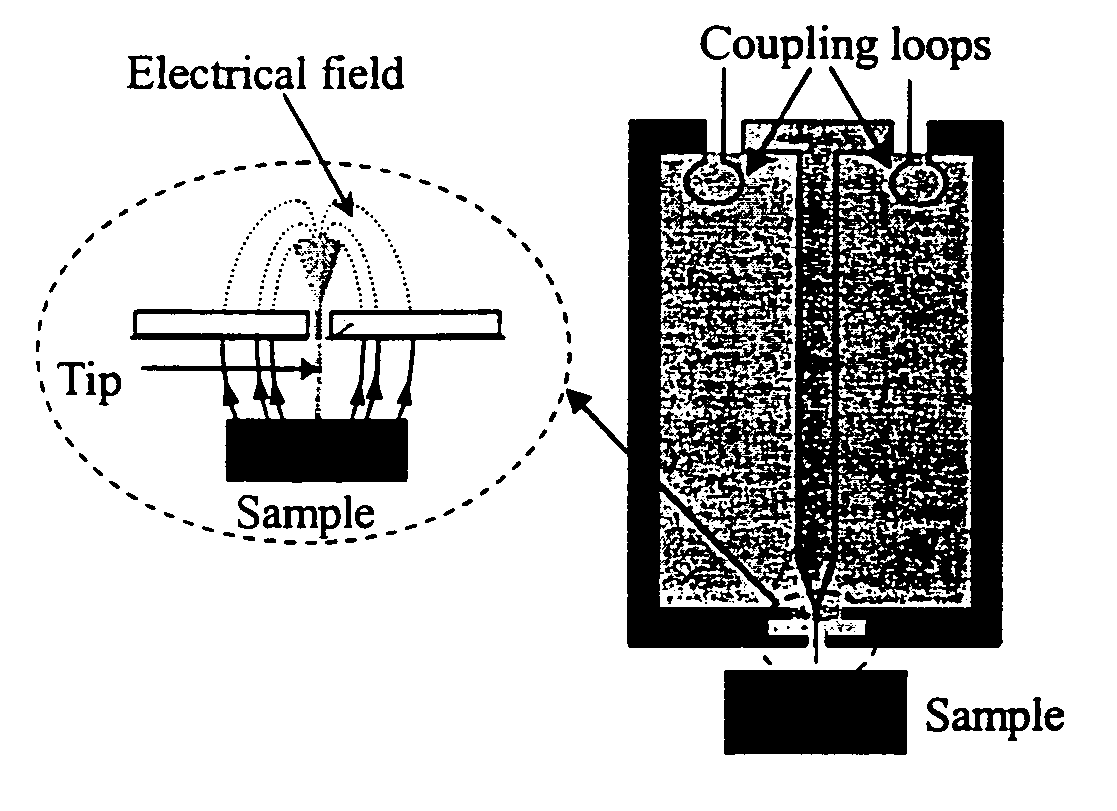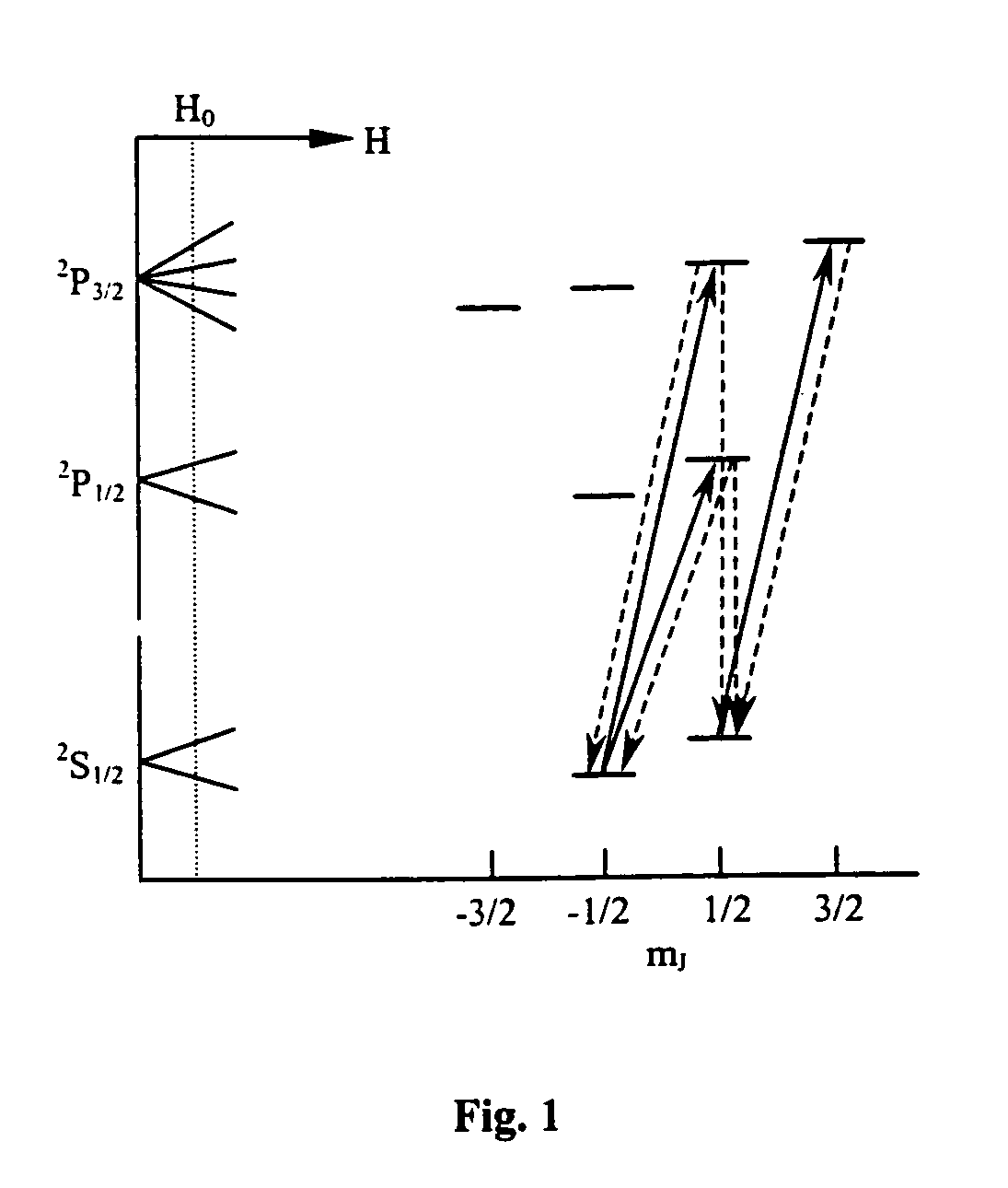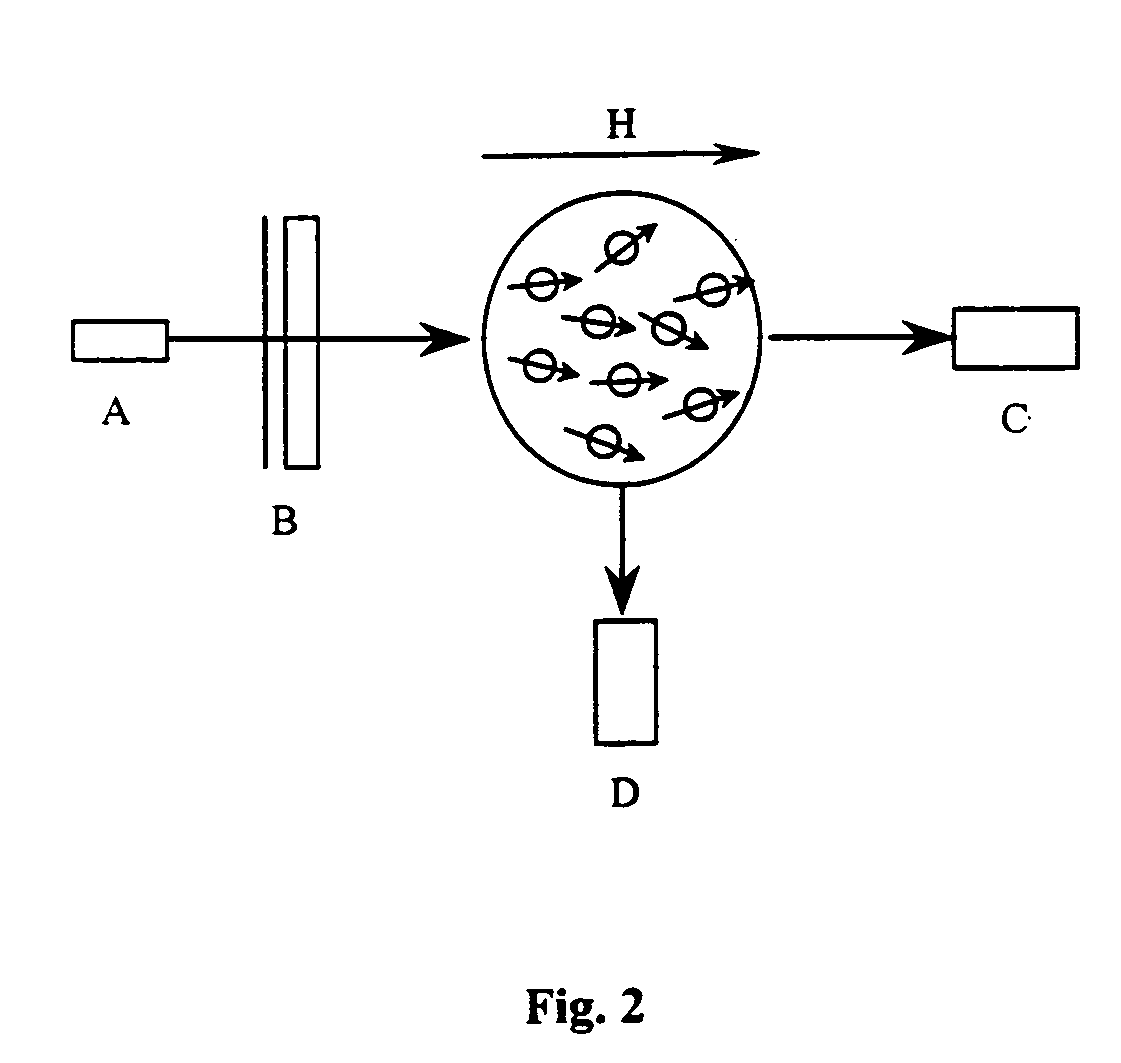Spatially resolved spin resonance detection
a technology of spatial resolution and detection, applied in the direction of material analysis, instruments, using reradiation, etc., can solve the problems of large background noise, limited intra-spin resonance sensitivity, and inability to achieve real-time detection level, etc., and achieve high sensitivity
- Summary
- Abstract
- Description
- Claims
- Application Information
AI Technical Summary
Benefits of technology
Problems solved by technology
Method used
Image
Examples
Embodiment Construction
[0021]One way to improve the detection sensitivity is to employ a resonator with degenerate orthogonal modes. In this case, input and output channels are coupled to these orthogonal modes respectively. Ideally, the pick up coupling only picks up signal due to spin resonance induced effects from the sample, not from the large excitation signal. Ideally, because the power fed from input channel will not coupled to the output channel, one gets a near zero-power background. The low noise amplifier can therefore be employed without being saturated. When the magnetic resonance is excited, the resonance destroys the symmetry of those orthogonal modes and couples small power to the mode that is coupled with output channel. This small power due to the symmetry breaking is the signal power that desired to be detected. Witte et al. reported a design of an X-band induction spectrometer with a bimodal cavity with 110 dB isolation between transmitter and receiver [A. Witte, G. Laukien and P. Dull...
PUM
| Property | Measurement | Unit |
|---|---|---|
| electrical impedance | aaaaa | aaaaa |
| impedance | aaaaa | aaaaa |
| evanescent wave probe | aaaaa | aaaaa |
Abstract
Description
Claims
Application Information
 Login to View More
Login to View More - R&D
- Intellectual Property
- Life Sciences
- Materials
- Tech Scout
- Unparalleled Data Quality
- Higher Quality Content
- 60% Fewer Hallucinations
Browse by: Latest US Patents, China's latest patents, Technical Efficacy Thesaurus, Application Domain, Technology Topic, Popular Technical Reports.
© 2025 PatSnap. All rights reserved.Legal|Privacy policy|Modern Slavery Act Transparency Statement|Sitemap|About US| Contact US: help@patsnap.com



